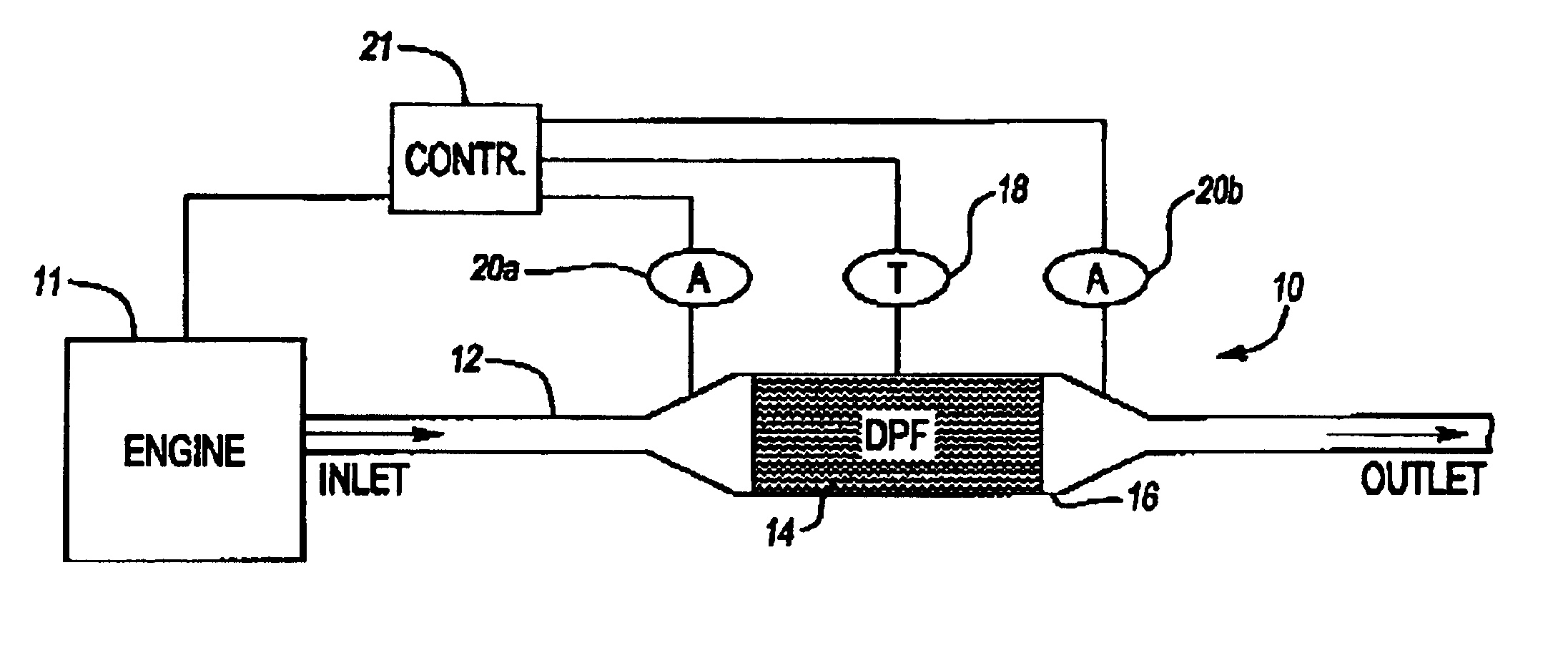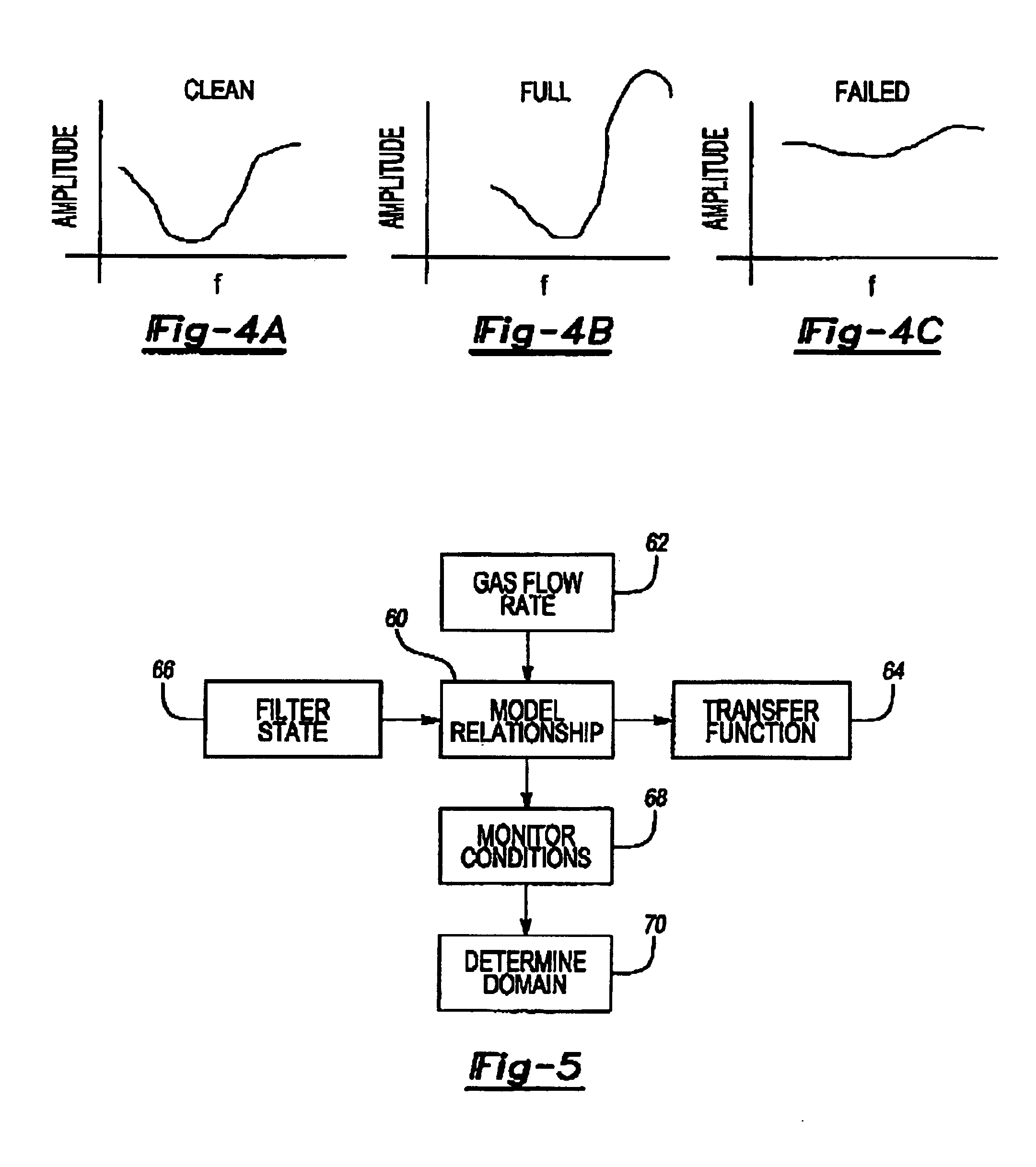Diesel particulate filter monitoring using acoustic sensing
a technology of acoustic sensing and particulate filter, which is applied in the direction of fluid tightness measurement, combination devices, dispersed particle filtration, etc., can solve the problems of significant blow-by and filtering capability loss, and may not be able to achieve regeneration
- Summary
- Abstract
- Description
- Claims
- Application Information
AI Technical Summary
Benefits of technology
Problems solved by technology
Method used
Image
Examples
Embodiment Construction
[0015]The present invention provides a method and apparatus to monitor the DPF soot loading and substrate failure. Several sensors may be used to monitor the DPF. A combination of pressure, temperature, and acoustical sensors may be used both upstream and downstream of the DPF to monitor its physical state. Additional information from the engine / exhaust controller may be used to quantify the exhaust flowing through the DPF.
[0016]The present invention acoustic filter sensing system is shown at 10 in FIG. 1. System 10 is part of a powertrain system including an engine 11 connected to a portion of an exhaust system 12 having a particulate filter 14 disposed within a portion of the exhaust system 12. The filter 14 is typically constructed from a ceramic honeycomb-shaped material, as is known in the art. In prior art systems, pressure sensors are arranged on either side of the filter 14 to determine the pressure drop across the filter 14, as known in the art. Pressure sensors typically r...
PUM
| Property | Measurement | Unit |
|---|---|---|
| Frequency | aaaaa | aaaaa |
| Frequency | aaaaa | aaaaa |
| Frequency | aaaaa | aaaaa |
Abstract
Description
Claims
Application Information
 Login to View More
Login to View More - R&D
- Intellectual Property
- Life Sciences
- Materials
- Tech Scout
- Unparalleled Data Quality
- Higher Quality Content
- 60% Fewer Hallucinations
Browse by: Latest US Patents, China's latest patents, Technical Efficacy Thesaurus, Application Domain, Technology Topic, Popular Technical Reports.
© 2025 PatSnap. All rights reserved.Legal|Privacy policy|Modern Slavery Act Transparency Statement|Sitemap|About US| Contact US: help@patsnap.com



